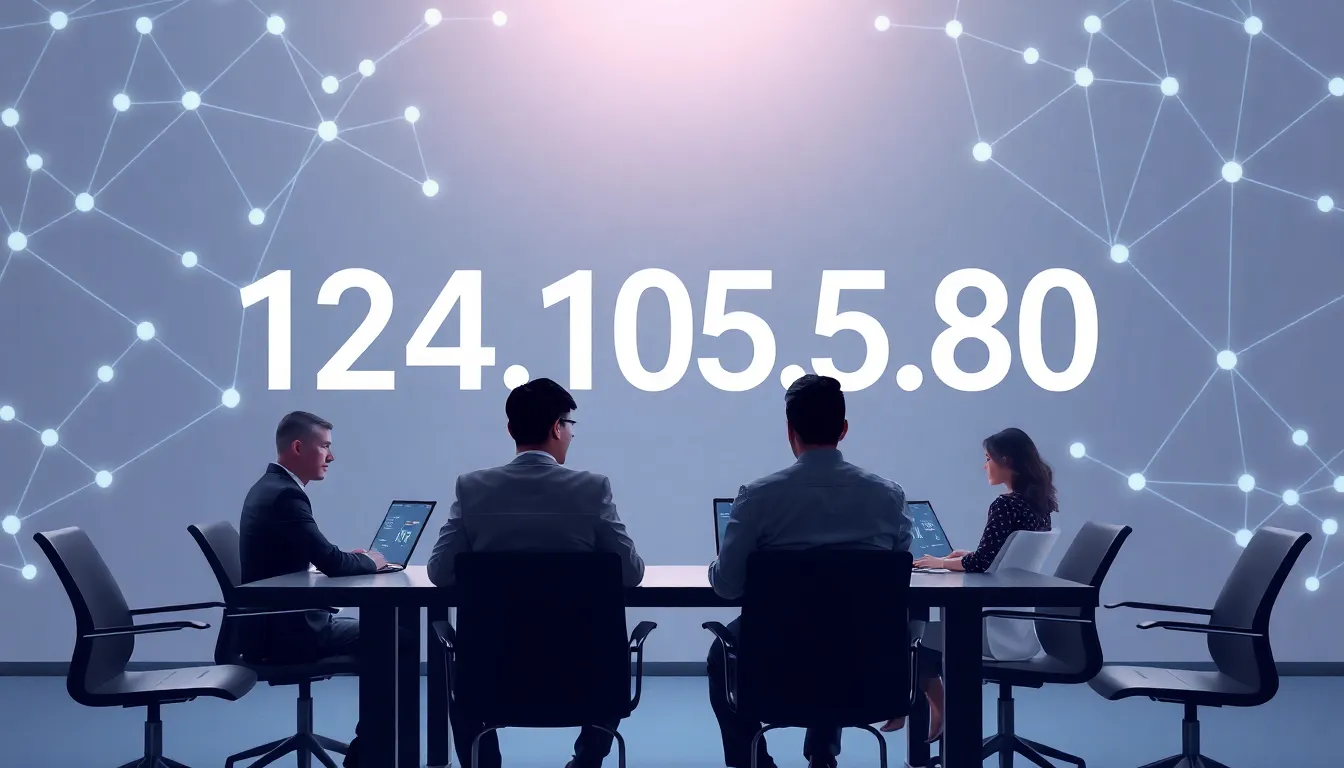Table of Contents
ToggleEver stared at an IP address and thought, “What on earth does that mean?” Well, you’re not alone. In the digital age, IP addresses might just be the unsung heroes of the internet. They’re like the street addresses for your devices, guiding them to send and receive data efficiently. But what happens when one of these addresses, say 124.105.5.80, comes into play? Let’s navigate this digital terrain together and uncover the mysteries behind this seemingly random set of numbers.
What Is an IP Address?

IP addresses are the backbone of the internet, serving as unique identifiers for every device connected to a network. Think of them as the phone numbers of the digital world, allowing devices to communicate seamlessly.
Types of IP Addresses
There are two main types of IP addresses: IPv4 and IPv6. IPv4 addresses, which include 124.105.5.80, consist of four sets of numbers ranging from 0 to 255. You might be wondering why IPv6 even exists: well, as the internet grew, we quickly ran out of unique IPv4 addresses. IPv6 emerged to solve this problem by using a longer format that allows for an almost infinite number of addresses.
How IP Addresses Function
When you enter a website or use an app, your device sends a request to another IP address. This request travels through several routers until it reaches its destination. Every router does its part to ensure your data arrives where it needs to go, just like a postal service delivering mail across the country. Each IP address acts like a house on the street, ensuring your information gets delivered directly to the correct location.
Geolocation of 124.105.5.80
Now that we have a basic understanding of IP addresses, let’s dive deeper into 124.105.5.80 and explore its geolocation.
Potential Uses of This IP Address
Geolocation provides an insight into where the IP address is physically located. In this case, 124.105.5.80 indicates that it’s based in a specific region. This geographical awareness is crucial for various applications, from content localization to targeted advertising. For instance, businesses can offer promotions that are relevant to users in that area, enhancing user experience.
Understanding the Owner and Hosting Provider
Identifying who owns 124.105.5.80 offers additional context. This information typically sheds light on the hosting provider responsible for that IP address. By using tools like WHOIS, you can check ownership details. Knowing the owner helps understand the reliability and safety associated with that IP. This step is essential, particularly if you encounter suspicious activity from the address.
Security Considerations for IP Addresses Like 124.105.5.80
With a clearer picture of geolocation comes the need to address security concerns about IP addresses.
Common Security Threats
One cannot overlook the potential threats linked to IP addresses. Common security concerns include DDoS attacks, data breaches, and online stalking. Attackers often exploit vulnerabilities associated with specific IP addresses to execute malicious activities. Being aware of these threats allows users to take necessary precautions, whether they are securing personal devices or managing corporate networks.
Best Practices for IP Address Security
So, how can one protect themselves and their network from potential threats? Here are some best practices:
- Regular Software Updates: Keeping devices updated helps to patch vulnerabilities that attackers might exploit.
- Use a VPN: A Virtual Private Network enhances security by masking your IP address and encrypting your internet traffic.
- Firewall and Antivirus: Carry out robust firewall settings and a reliable antivirus program to detect and prevent threats before they can cause damage.
By following these steps, you significantly lower the risks associated with harmful activities involving IP addresses.






